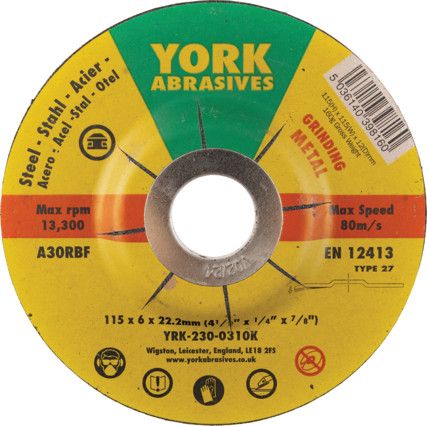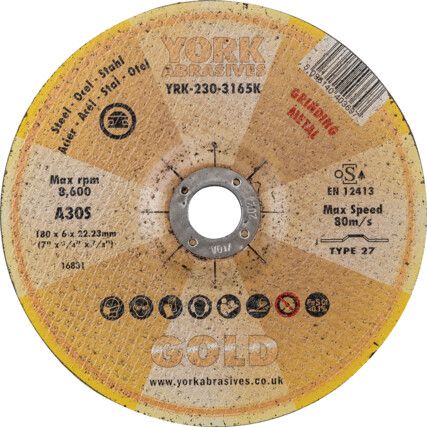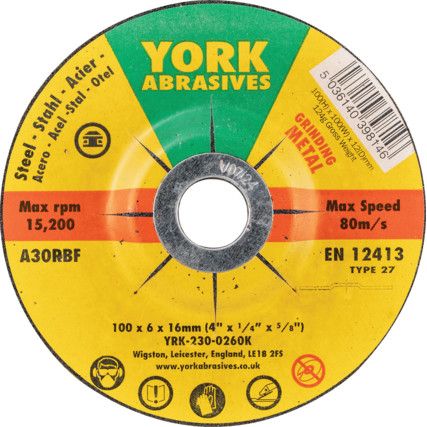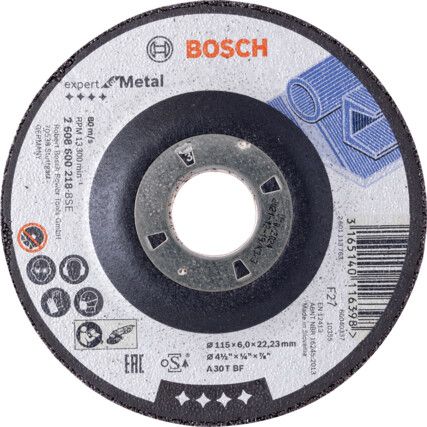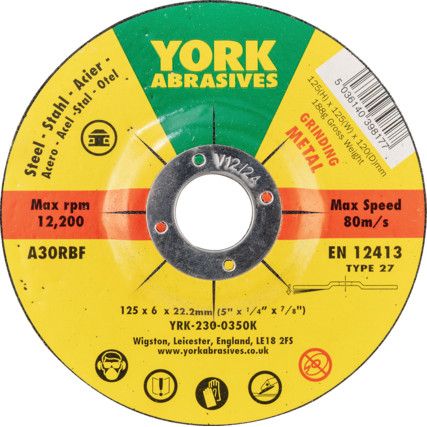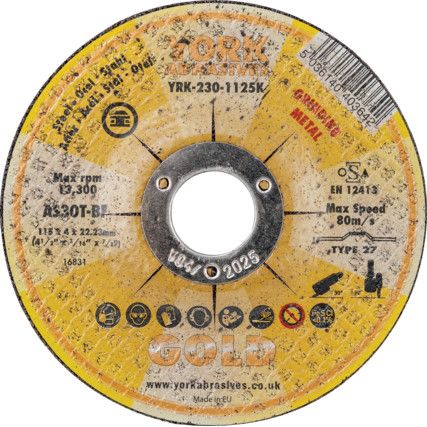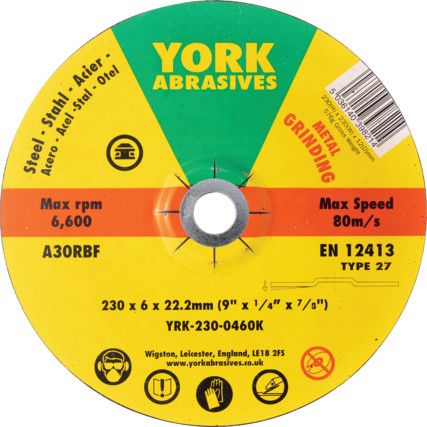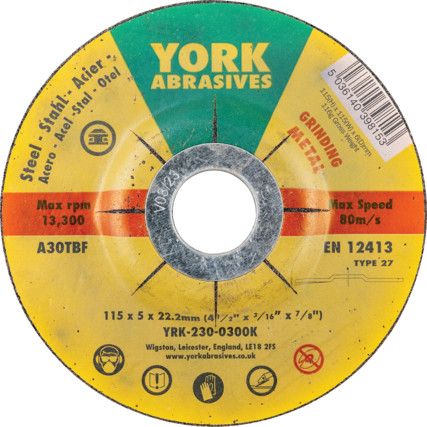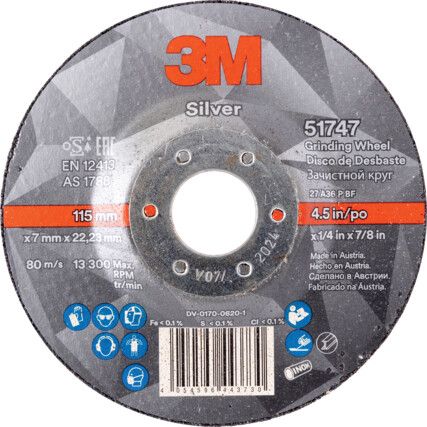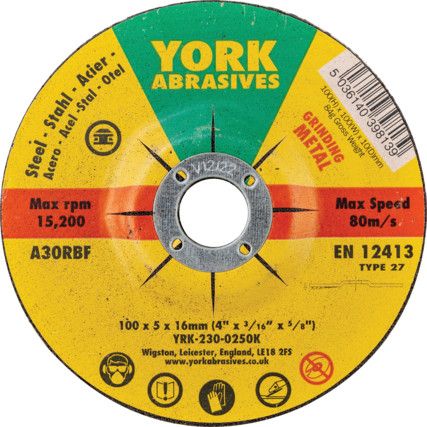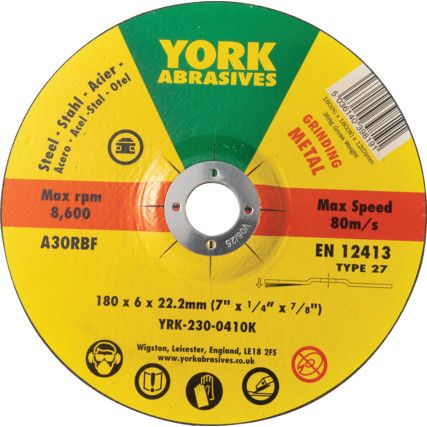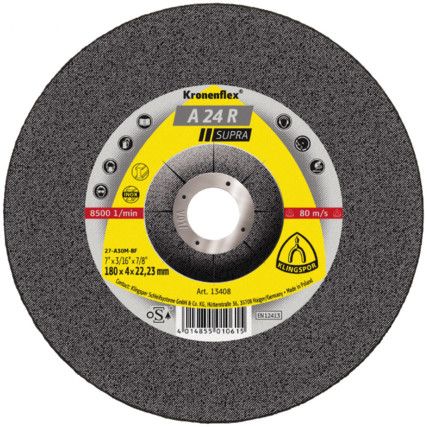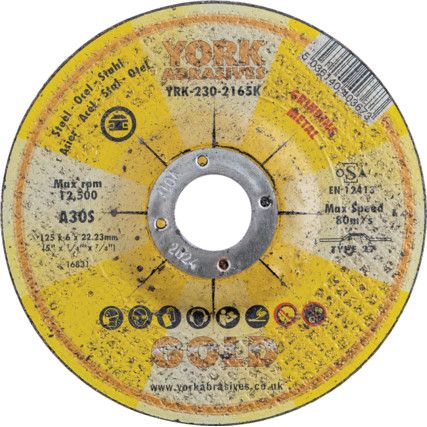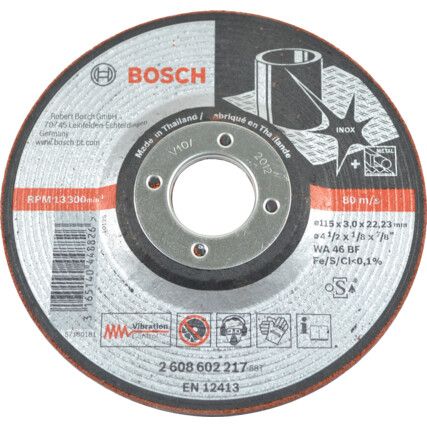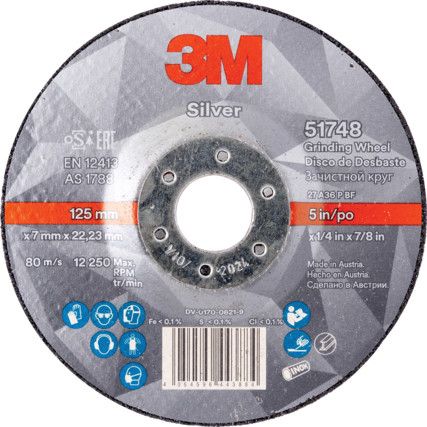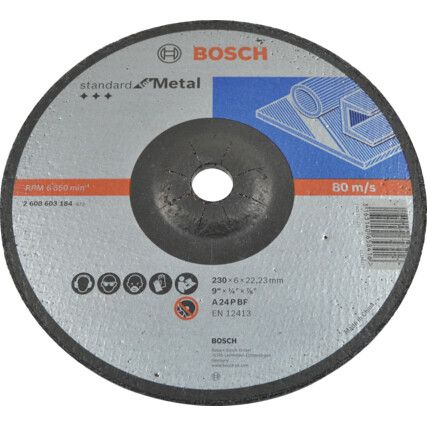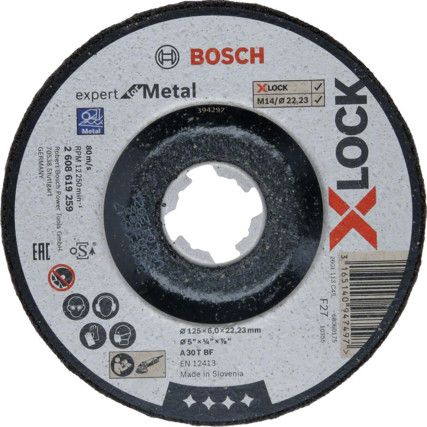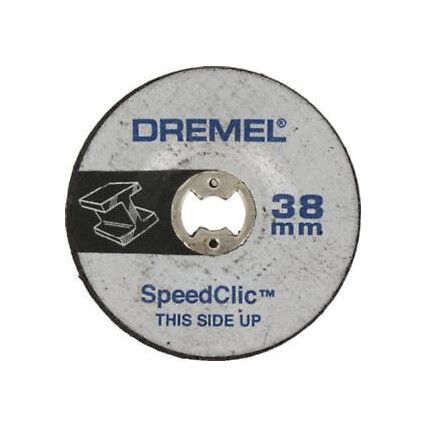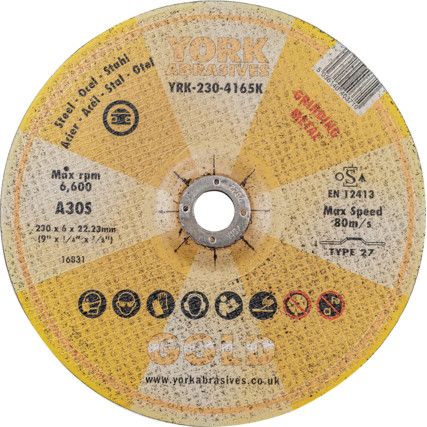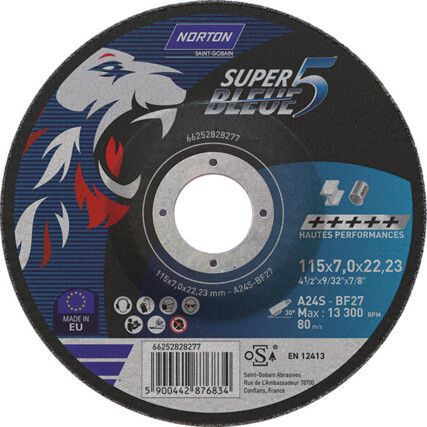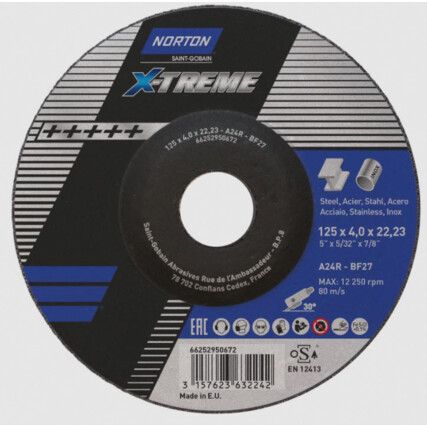Grinding Discs
Abrasive grinding discs are a must-have for any angle grinder. Their versatile usage and quick, efficient performance enables a wide range of industry jobs to be enacted with minimal effort.
At Cromwell, we stock numerous types of tried and tested grinding discs, from trusted brands and suppliers used by professionals around the globe.
What are grinding discs?
Abrasive grinding discs are used for countless applications across a large number of industries, but their primary function is - as you may have guessed - grinding.
They come in a number of configurations, with varying materials, sizes, and grains to suit the needs of demanding professionals. All grinding discs are made from strong compounds, bonded together using powerful substances.
Grinding discs are designed for quickly removing large amounts of metals, such as steel. This is done by placing the grinding disc in an angle grinder (or similar power tool) that spins the disc at a high RPM. When the disc is pushed into the workpiece, the strong grains that form the disc act as thousands of cutting points, grinding the metal as the disc spins.
Why grinding discs?
Industry professionals and hobbyists alike are aware of the value gained by using the right kind of grinding discs in their angle grinders.
With discs available for use on both metal and stone, multiple different industries value the quick and convenient material removal offered by an angle grinder and the appropriate grinding discs.
Abrasive grinding discs offer enhanced durability and higher working rates than similar alternatives, meaning they are widely considered the most cost effective and productive methods to quickly grind materials, smooth welds, remove rough edges, and more.
When are grinding discs used?
Grinding discs are used in angle grinders and other similar power tools - and are invaluable for use across a large range of industrial and DIY applications. Depending on the type of grinding disc you buy, grinding discs can be used on metal or stone. Some general applications include:
• Material removal
• Smoothing fresh welds
• Removing rough edges
• General metal fabrication
• Sharpening
• Stone reshaping
• Stone smoothing
These are a few of the applications grinding discs are used for across a range of industries including construction, fabrication, foundry, automotive, and aerospace.
Need help picking the right grinding disc for your usage? Feel free to get in touch with our experts, who offer free, professional advice to help you find the best tools for your needs.
Types of grinding disc
The material of your grinding disc is one of the most important considerations when making a purchase.
• Aluminium oxide - Aluminium oxide is the most common material used to make grinding discs. Its high strength, cost effectiveness and adaptability make it great for general metal grinding.
• Silicon carbide - Silicon carbide is the hardest and sharpest type of grinding disc available. Silicon carbide discs are generally used to grind a wider variety of materials, such as masonry or concrete. Always check with the disc manufacturer to see what materials your disc can grind.
• Ceramic - Ceramic grinding discs offer exceptional durability and resistance, thanks to a design that constantly exposes fresh abrasive grains when in use. Whilst not as strong as silicon carbide, or as cost effective as aluminium oxide, ceramic grinding discs offer excellent durability for medium strength grinding jobs.
Considerations when choosing grinding discs
• Disc grain size - The grade of your grinding disc determines the type of finish you achieve and the amount of material you remove. Higher grades (60+) provide a fine, smooth finish, whereas lower grades (below 30) are coarser, providing a rougher finish but removing more material.
• Disc size - Obviously, this mostly depends on your angle grinder. Ensure you buy the right size of disc to fit your power tool to avoid unnecessary returns.
FAQs
What PPE is used for grinding?
Safe grinding requires suitable safety glasses or a face shield to protect users from flying debris that is present when grinding. Aprons, gloves, safety shoes, and hearing protection is also beneficial to prevent accidents or injury.
When should I change grinding disc?
Grinding discs should be changed as soon as they show any signs of visible damage - such as chips, cracks, warping, or bends. Additionally, grinding discs have an expiration date which can be found imprinted in the centre of the disc. Ensure this is adhered to in order to prevent damage or injury.
